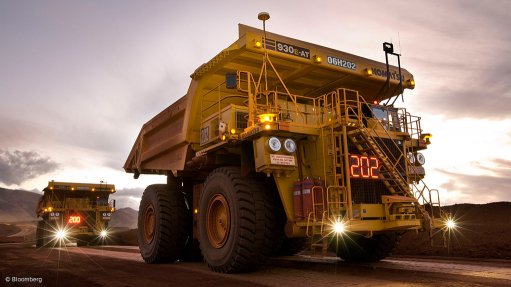
Photo by: Bloomberg
PERTH (miningweekly.com) – Cost reduction measures in the mining industry could well have undermined productivity in the sector, advisory firm Ernst & Young (EY) has warned, saying instead that a complete business transformation would be required to reverse the decade-long decline in productivity.
“On a volume and cost basis, productivity has been declining since 2000 as miners chased production growth during the commodity boom,” said EY Global mining and metals advisory leader Paul Mitchell.
Mitchell said an indication of the scale of the issue is evident in Australian Bureau of Statistics multi-factor productivity measure which includes common factors such as labour, capital and materials, and which showed that mining productivity in Australia has declined by about 50% since 2001.
“Australia is not alone. Productivity has declined across the sector globally, in both developed and emerging markets. The issue has been escalated to the CEO agenda of mining companies globally,” Mitchell added.
In EY’s latest Productivity in Mining report, the firm pointed out that despite massive investment in new equipment and automation, capital productivity has also fallen over the last decade. In Australia alone, capital productivity has declined by 45% since 2000, versus 22% in all other industries.
Mitchell noted that while many mining companies have achieved significant cost cuts in the past two to three years through conventional means, “making productivity gains isn’t as simple as further cost reduction efforts”.
“The super-cycle lasted for so long it had the impact of altering the DNA of mining companies to adapt the processes, performance measures and culture solely toward growth. This transformation has occurred by stealth and the counter-transformation will need to be far more radical,” he said.
“The size of the problem is too large for conventional solutions to work. Real productivity gains will only come from a whole-of-business, end-to-end transformation. A narrow focus on point solutions or continuous improvement won’t solve the problem and could even be counterproductive.”
EY pointed that real and sustainable productivity improvements could require significant adjustments including changes to mine plans, reassessment of mining methods, changes to equipment fleet and configuration, and increasing automation.
“Most of these have been untouched by cost reduction exercises, and in some cases reducing production may be beneficial. The quest needs to be long-term and requires a change across the organisation from the boardroom to the pit,” Mitchell said.